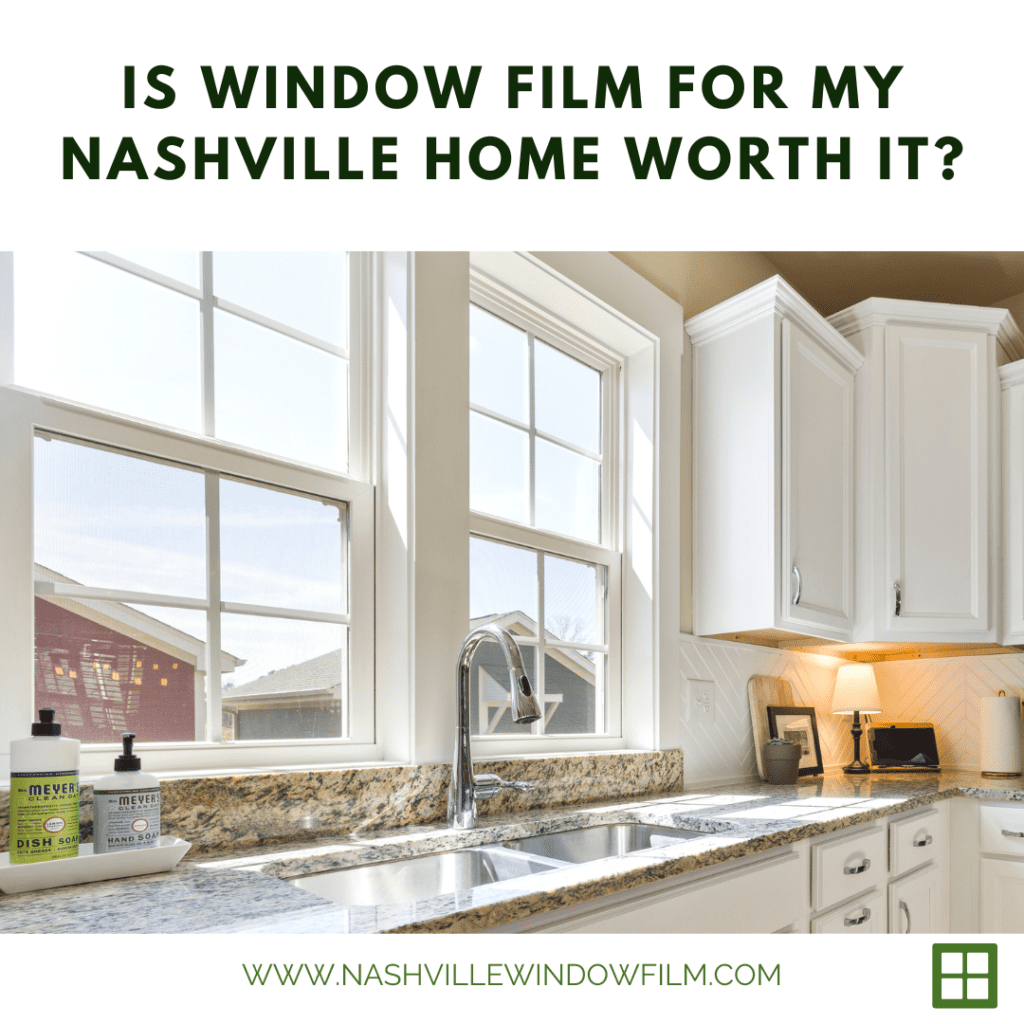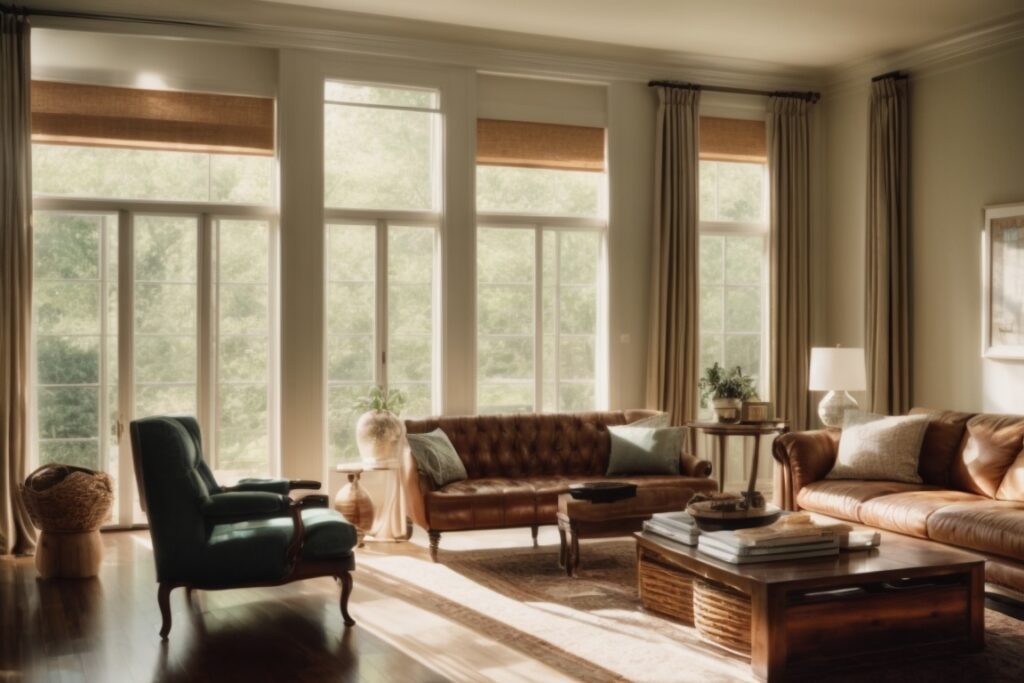As winter descends upon Nashville, the Music City transforms into a seasonal wonderland, ushering in crisp temperatures and the promise of festive celebrations. While Nashvillians embrace the enchanting ambiance of the colder months, the quest for warmth and energy efficiency becomes paramount. In the pursuit of creating cozy sanctuaries amidst the chill, homeowners are increasingly turning to innovative solutions. Enter Low-E window film for Nashville properties – a technology that goes beyond mere aesthetics, offering a blend of science and practicality to enhance winter living.
In this blog, we unravel the benefits of Low-E window film specifically tailored for the unique winter climate in Nashville. From preserving indoor warmth to curbing energy costs, join us on a journey through the advantages that make this cutting-edge technology a valuable asset for residents navigating the colder season in this vibrant southern city. Discover how Low-E window film not only transforms windows but also elevates the overall comfort and energy efficiency of homes in Nashville’s winter landscape.
Explanation of Low-E Technology
Low-emissivity (Low-E) window film is designed to control the transfer of heat and light through windows. The technology behind Low-E window film involves microscopic layers of metallic particles or coatings that are applied to the surface of the film. These layers are typically composed of metals like silver or tin, or metal oxides such as zinc oxide.
Why Low-E Window Film Is a Good Fit for Nashville’s Climate
Nashville, nestled in the heart of Tennessee, experiences a humid subtropical climate characterized by distinct seasons. Summers are typically warm and humid, with temperatures often reaching the high 80s and 90s Fahrenheit (around 30 to 35 degrees Celsius). Winters are cooler, with daytime temperatures ranging from the high 30s to the mid-50s Fahrenheit (around 3 to 12 degrees Celsius). The city also sees occasional winter precipitation, including rain, sleet, and snow.
Given Nashville’s climate, Low-E (low emissivity) window film proves to be a particularly beneficial addition to homes and buildings. Here’s why it’s a good fit:
- Winter Insulation: In the winter, temperatures can drop, and maintaining a comfortable indoor environment becomes crucial. Low-E window film is designed to reduce heat transfer through windows by reflecting infrared radiation (heat) back into the interior. This helps keep the warmth generated inside the home from escaping through the windows, contributing to improved insulation during the cooler months.
- Temperature Variations: Nashville experiences a range of temperatures throughout the year. Low-E window film is versatile and effective in both cold and warm seasons. It helps regulate indoor temperatures by minimizing heat loss in the winter and reducing solar heat gain in the summer, providing year-round benefits.
- UV Protection: Nashville’s sunny climate exposes homes to ample sunlight. Some Low-E films also offer UV protection, blocking a significant portion of harmful ultraviolet (UV) rays. This not only enhances indoor comfort by reducing glare but also protects furnishings and interiors from fading due to prolonged sun exposure.
- Energy Efficiency: With both hot summers and cool winters, energy efficiency is a key consideration for homeowners in Nashville. By improving the insulation of windows, Low-E window film can contribute to energy savings by reducing the need for excessive heating in the winter and cooling in the summer.
- Comfort Enhancement: Beyond energy efficiency, Low-E window film enhances overall comfort by minimizing temperature fluctuations near windows. This can create a more pleasant living environment, especially during extreme weather conditions.
Low-E Vs. Spectrally Selective
When discussing low-e window film, it’s important to note that these products are distinctively different from spectrally selective window films. Low-E (low emissivity) window film and spectrally selective window film are both designed to enhance the performance of windows, but they differ in their primary functionalities and the ways they interact with solar radiation.
Low-E window film typically incorporates a thin layer of metallic particles or coatings to reduce heat transfer through windows by reflecting infrared radiation. This helps to improve insulation and regulate indoor temperatures, making it effective in both cold and warm climates.
On the other hand, spectrally selective window film is engineered to allow specific wavelengths of light to enter while blocking a significant portion of heat-generating infrared radiation. This selective approach enables the film to control solar heat gain while maintaining high levels of natural light, making it a popular choice in regions with hot climates.
While both types contribute to energy efficiency and comfort, Low-E films are more focused on insulation, suitable for areas like Nashville with varied climates, while spectrally selective films prioritize visible light transmission and solar heat rejection, making them ideal for warm and sunny environments.
Top Low-E Window Films for 2024
Several popular Low-E (low emissivity) window film options are available on the market, each offering unique features and benefits. Here are a few well-known Low-E window film options:
- 3M Thinsulate Window Film: 3M is a reputable brand in the window film industry, and their Thinsulate Window Film is designed for both residential and commercial applications. It provides insulation by improving the window’s ability to retain heat during the winter and reduce solar heat gain in the summer.
- LLumar Low-E Window Film: LLumar offers a range of window films, and their Low-E options are known for enhancing energy efficiency and providing year-round comfort. These films are designed to minimize heat loss in the winter and reduce solar heat gain in the summer.
- Vista by LLumar Low-E Window Film: Vista is a division of LLumar that focuses on residential window films. Their Low-E window film offerings provide insulation benefits and UV protection while maintaining optical clarity.
- Solar Gard Low-E Window Film: Solar Gard offers a variety of window films, including Low-E options that help control heat transfer. These films are designed to improve insulation in both residential and commercial settings.
Stay Comfortable with Low-E Window Film in Nashville
As you navigate the changing seasons in Nashville, consider the transformative power of Low-E window film. Unlock the potential to enhance your home’s comfort, save on energy costs, and embrace a more sustainable lifestyle. Whether you’re aiming to cozy up during winter or seeking relief from the summer heat, the benefits are clear. Take the next step towards a more energy-efficient and comfortable living space. Contact our office to learn more about Low-E window film benefits in Nashville’s climate and discover how this innovative solution can elevate your home. Don’t let the seasons dictate your comfort—seize control with Low-E window film. Embrace the warmth, harness the cool, and make your home a haven all year round. Act now, and transform the way you experience the seasons in Music City!






About The Author: Nick Woodward
More posts by Nick Woodward